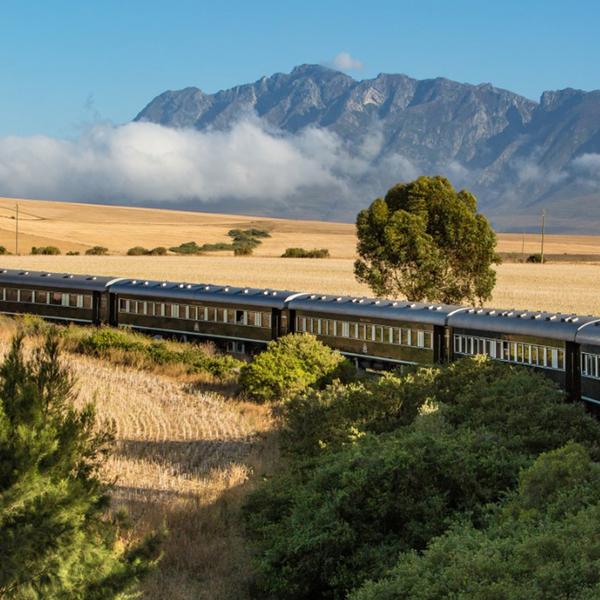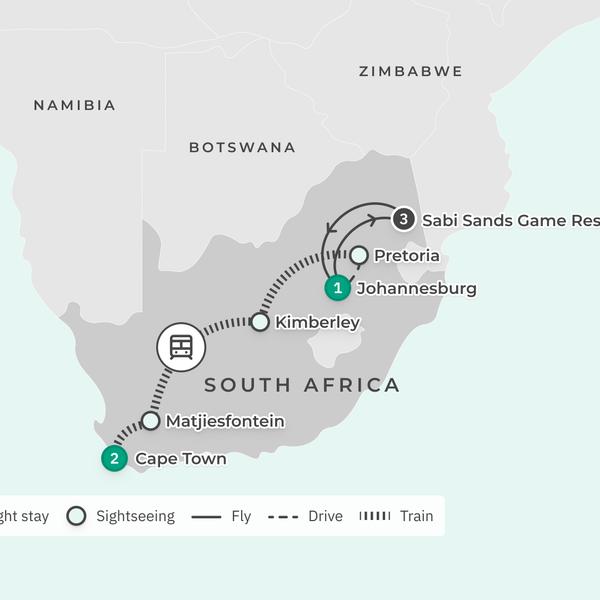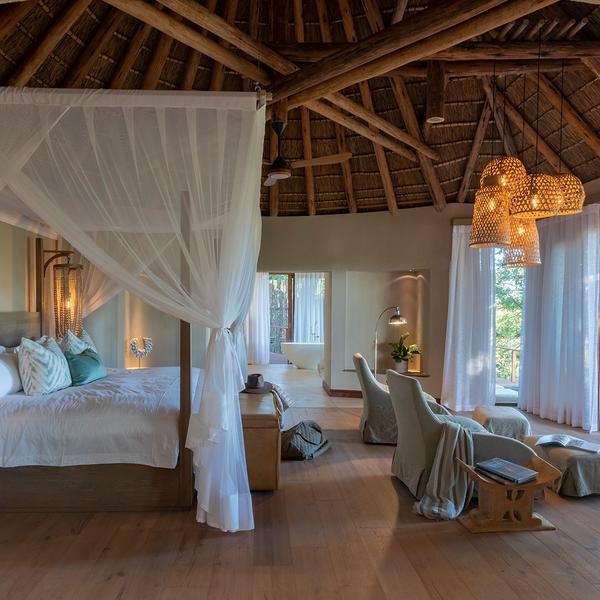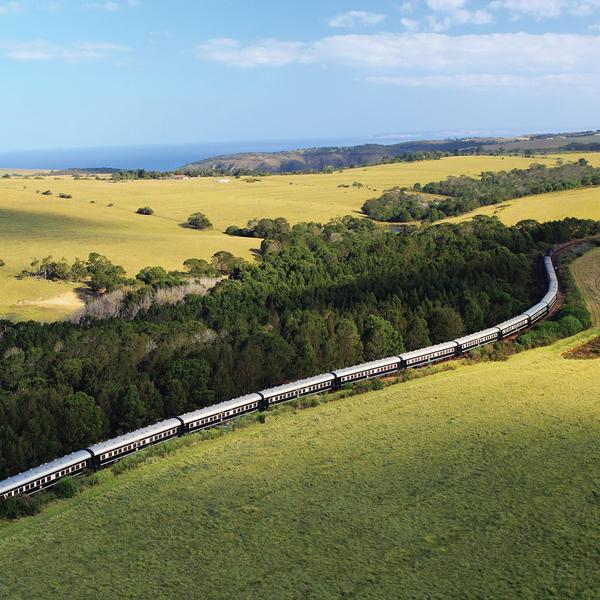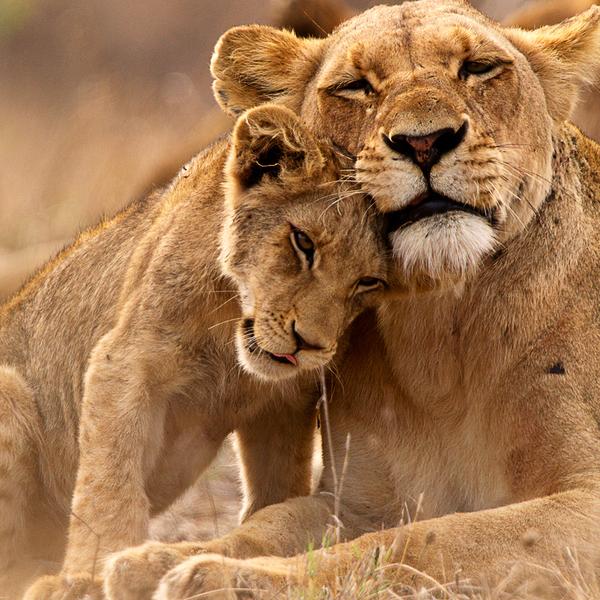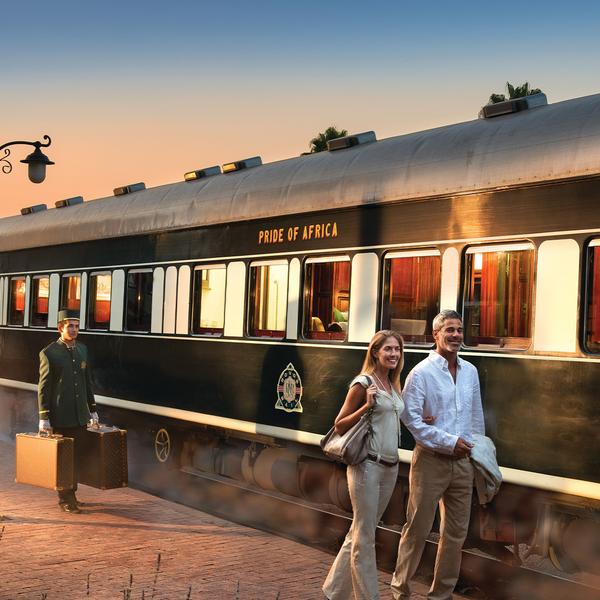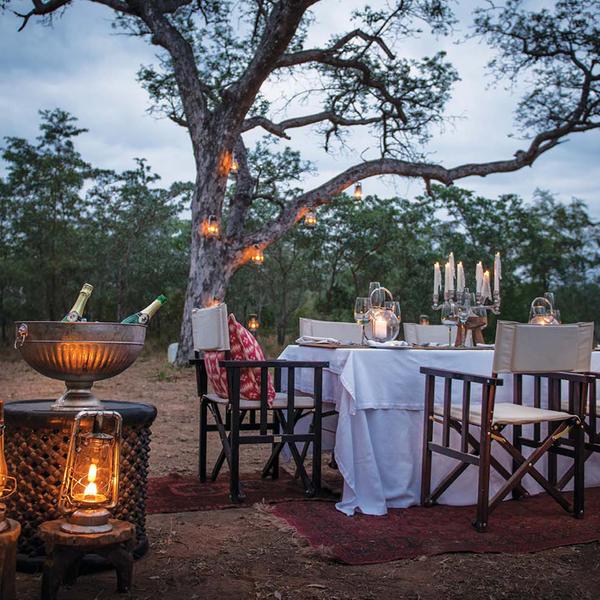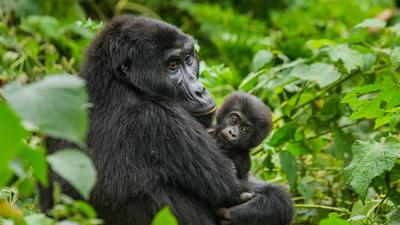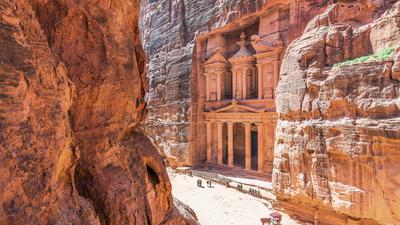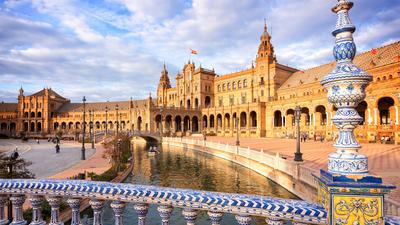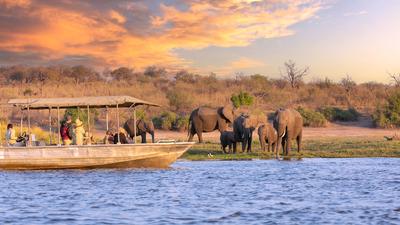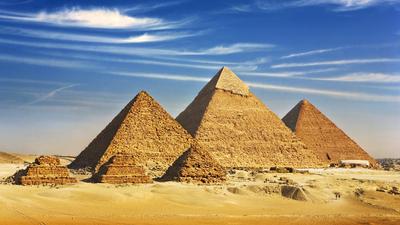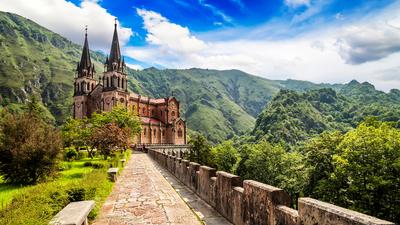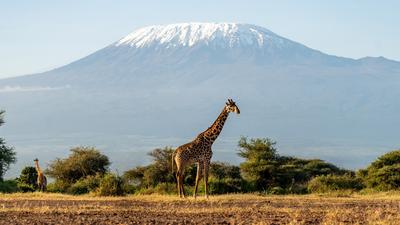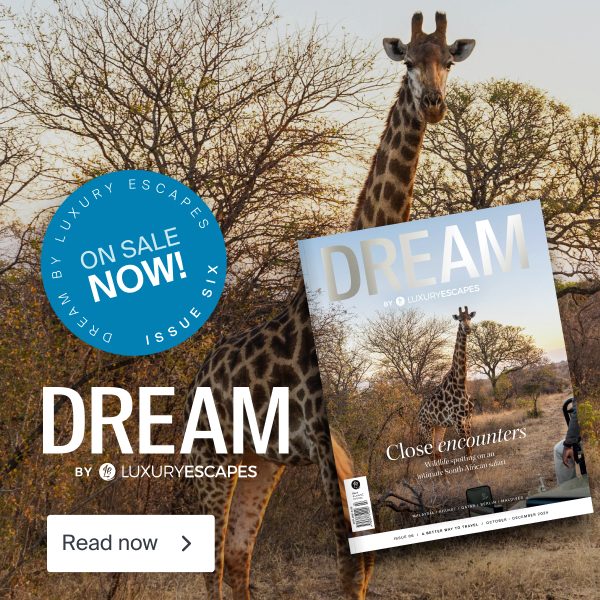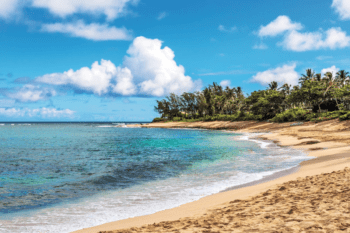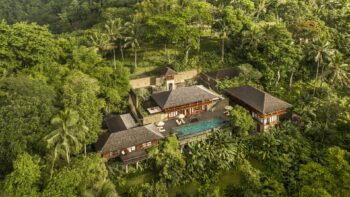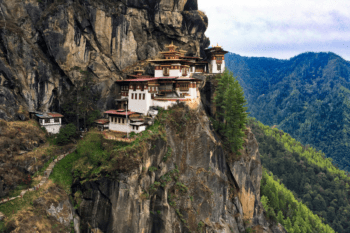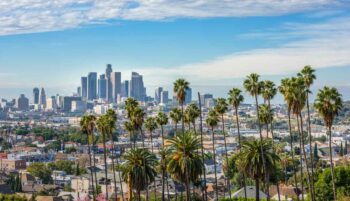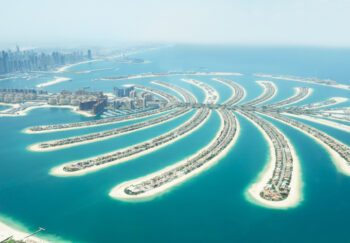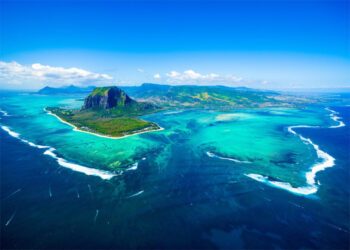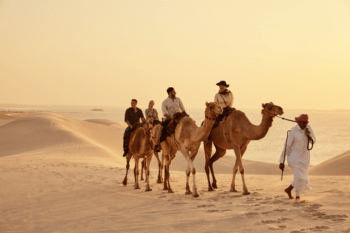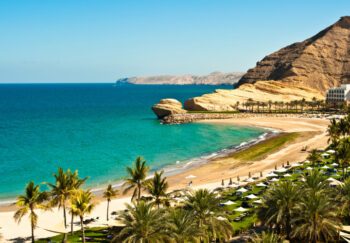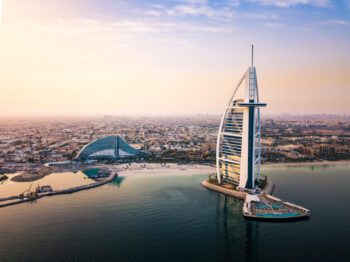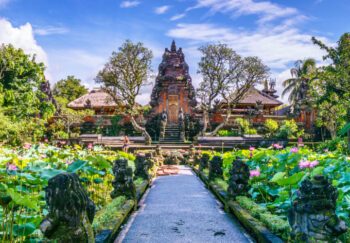These Are Africa’s Best National Parks & Game Reserves
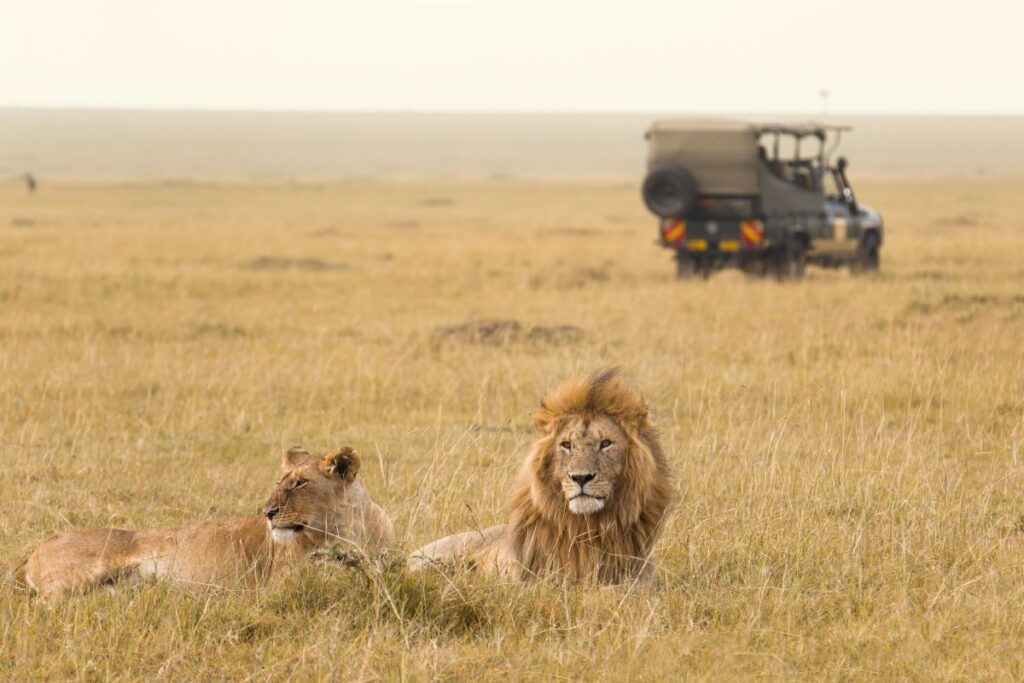
From sprawling Kruger National Park to thundering Victoria Falls, Africa’s national parks are a wonderland of abundant flora and fauna.
There’s nothing quite like the wild thrill of an African safari. Swaying savanna grasses and dense bamboo forests provide adventure-seekers with plentiful opportunities for wildlife-spotting, including the Big Five safari animals – the lion, leopard, African buffalo, elephant and rhinoceros. Whether you’re eager for an audience with the humbling mountain gorilla or looking to lose yourself in South African scenery, these national parks and game reserves offer some of Africa’s wildest experiences.
Kruger National Park, South Africa
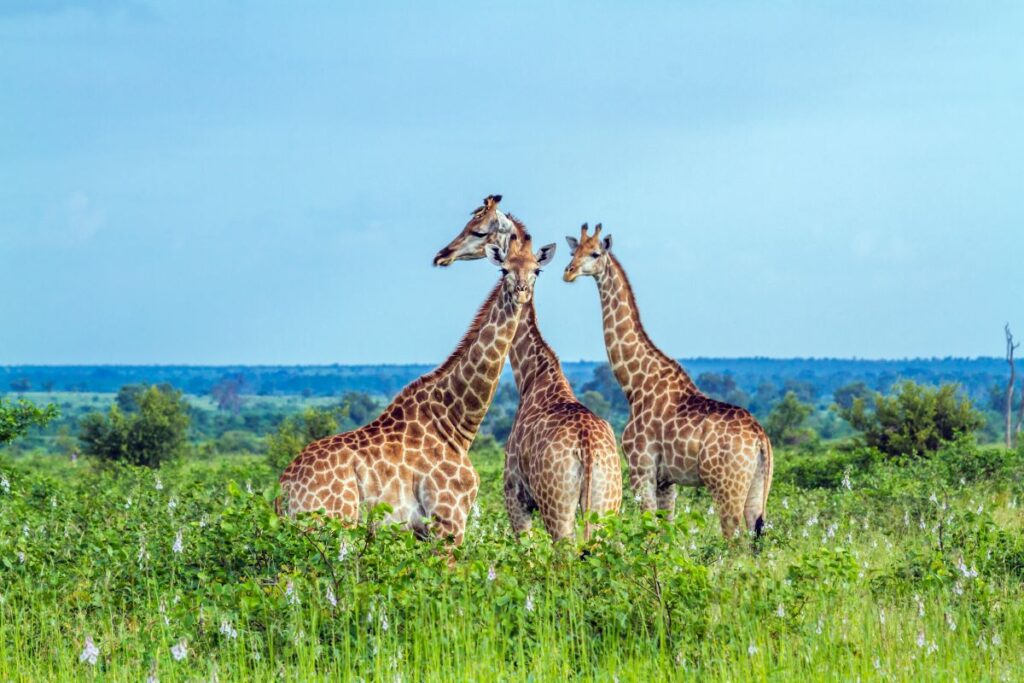
At almost 20,000 square kilometres, Kruger National Park is South Africa’s largest reserve and rates as one of the biggest on the continent. A game drive through Kruger promises excellent odds on spotting the most exciting animals in the region, from gargantuan giraffes to herds of monochromatic zebra. The park’s crowning glory is the chance to see a pride of lions in all their ferocious majesty. Kruger is accessible year-round, though the dry winter period during July and August offers the best game-viewing. Travellers planning to visit from January to April can also expect vibrant flocks of migratory birds.
Sabi Sands Game Reserve, South Africa
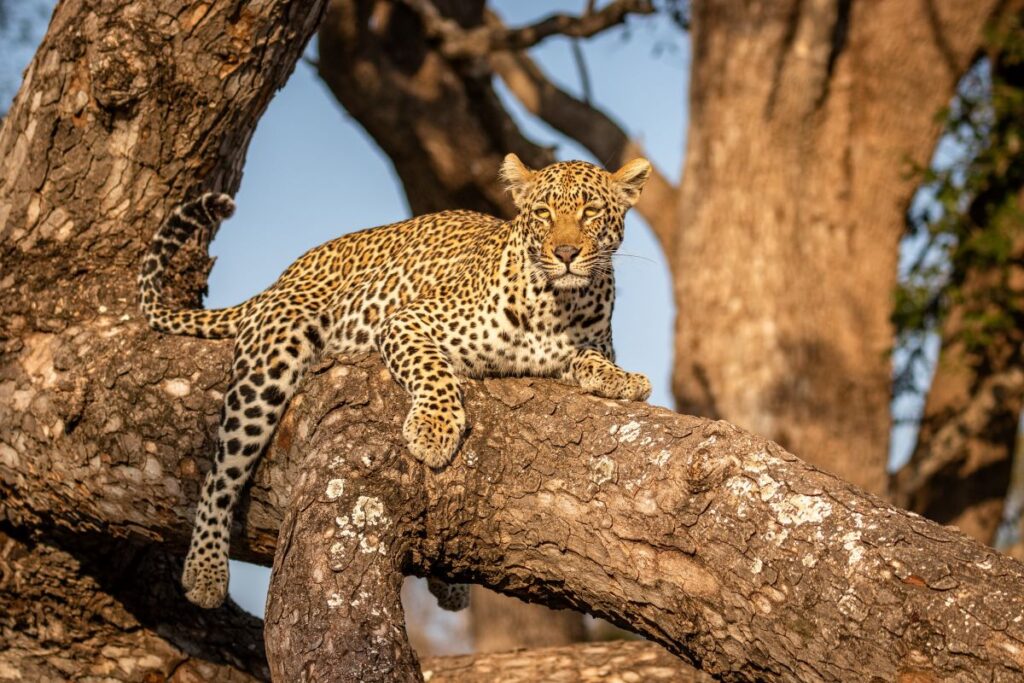
On the western border of Kruger National Park lies Sabi Sands Game Reserve, a private luxury game reserve where you can stay in supreme comfort at some of South Africa’s very best safari lodges, such as the spectacular Lion Sands Ivory Lodge. Watch for the Big Five from your accommodation; you may even catch a glimpse of the reserve’s resident leopard population on the prowl. Staying in Sabi Sands also gives travellers the chance to join private safaris into this exclusive wilderness, maximising wildlife-viewing without the crowds.
Victoria Falls National Park, Zambia & Zimbabwe
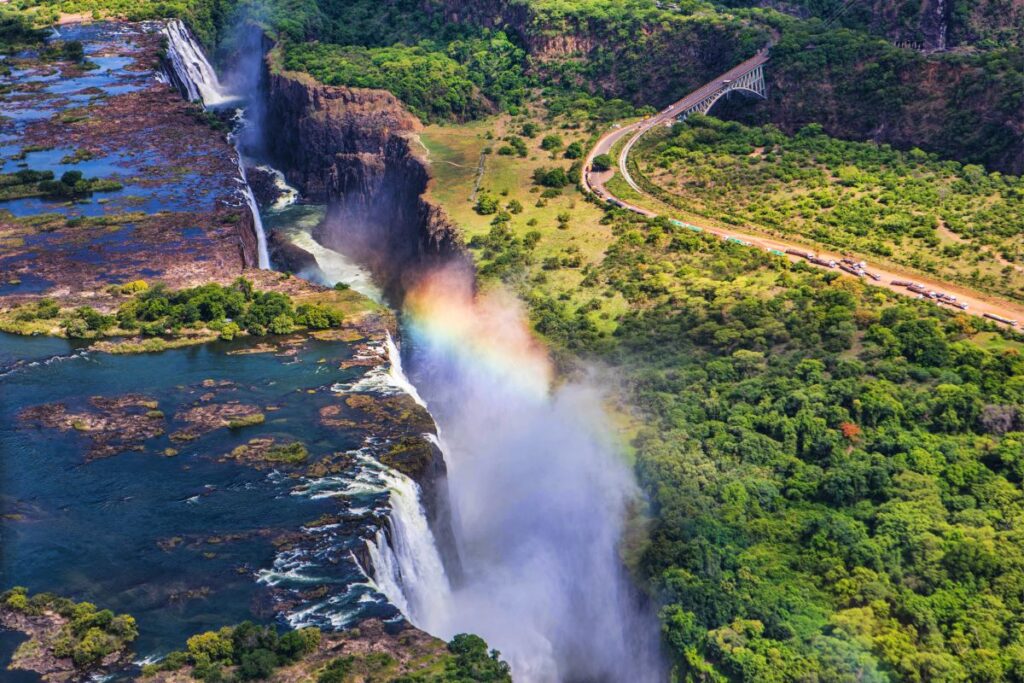
One of the Seven Natural Wonders of the World, Victoria Falls is a colossal torrent at the border of Zambia and Zimbabwe, locally named Mosi-oa-Tunya, or ‘the Smoke that Thunders’. As the largest sheet of falling water on the planet, Victoria Falls all but guarantees breathtaking views, no matter where you stand. Choose to join an exhilarating white-water rafting adventure or opt to soak up the atmosphere from the walkway network, where a plethora of birdlife populates the surrounding rainforest. By the light of the full moon, look to the falls for an elusive lunar rainbow – one of only a handful of places on earth where this nocturnal phenomenon occurs.
Chobe National Park, Botswana
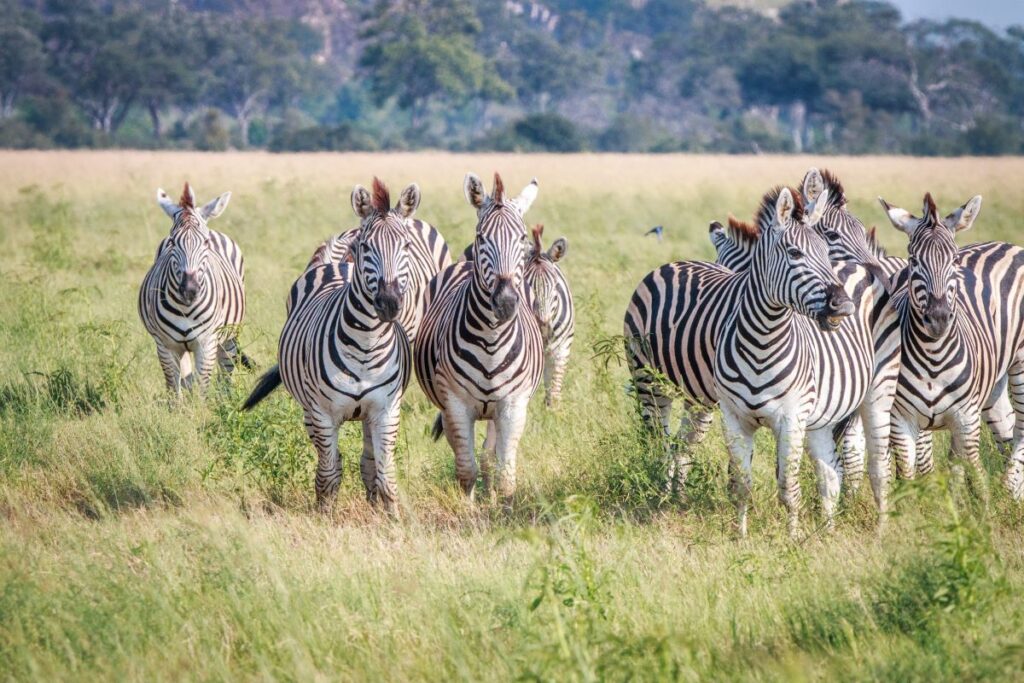
Approximately 120,000 elephants call Chobe National Park home and a trip to Botswana is a golden opportunity to see these graceful giants in the wild. Beyond the Big Five, wildlife-lovers can look for more than a dozen different types of antelope, from the prancing impala to the rare puku. At the end of November, or the end of March, travellers can also catch the Chobe-Nxai Pan zebra migration – one of Africa’s longest mammal migrations. Head to the Savute region for the best viewing as some 15,000 zebras cover 1,000 kilometres in a seasonal roundtrip journey to the Nxai Pan salt basin.
Maasai Mara National Reserve, Kenya
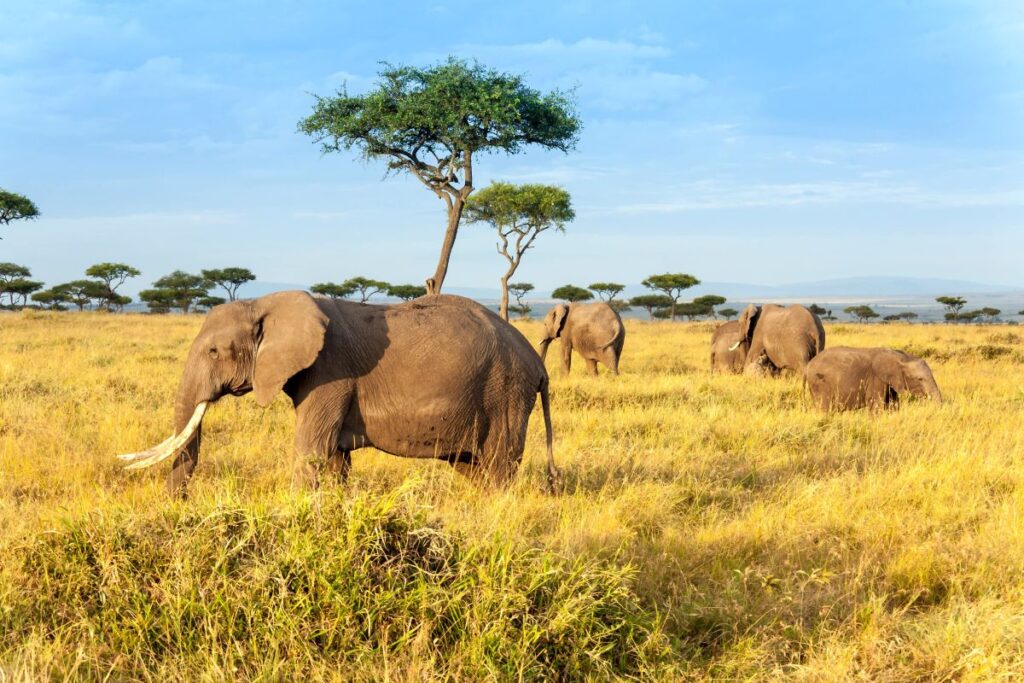
Travellers can encounter African buffalo, imposing hippos and migrating wildebeest on safari through Kenya’s Maasai Mara National Reserve. Travel from June to October for the dry season, when animals congregate around waterholes. For those wishing to encounter the magnificent lion, January through March following the rainy season offers best viewing. In addition to mammalian magic, Maasai Mara is home to an array of exciting birdlife, from the toucan-like African grey hornbill to the black chested snake eagle. By night, the elusive pangolin can be seen searching for a supper of ants.
Serengeti National Park, Tanzania
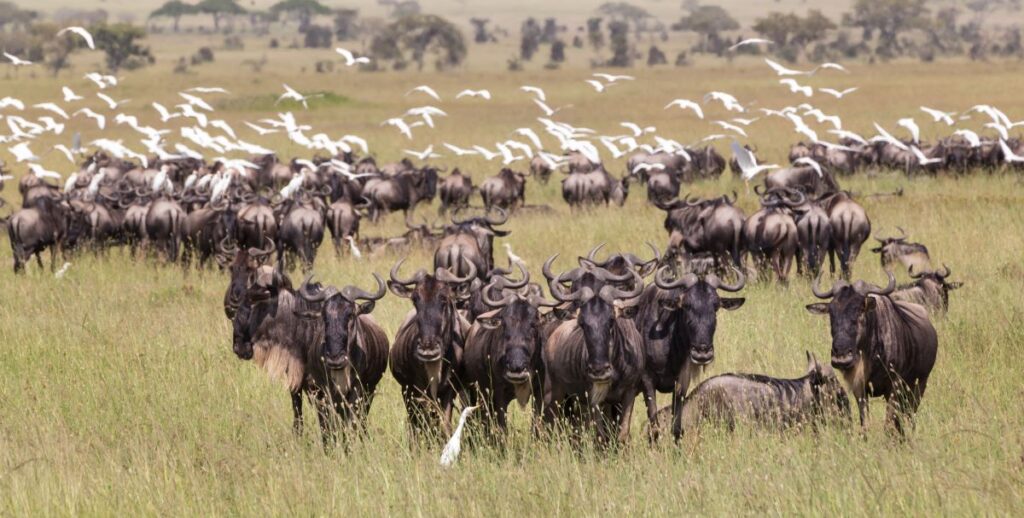
Across the border from Maasai Mara lies Tanzania’s Serengeti National Park, where the Great Migration takes place every year. From the region’s south, thousands of wildebeest and their calves make the perilous journey north to Maasai Mara, crossing crocodile-infested rivers and striving to outrun the largest lion population on the continent. From May, visitors can witness the 1.5-million-odd wildebeest as they rumble across the endless plains, returning once more by November. The Great Migration is a humbling experience for the avid adventurer.
Ngorongoro Conservation Area, Tanzania
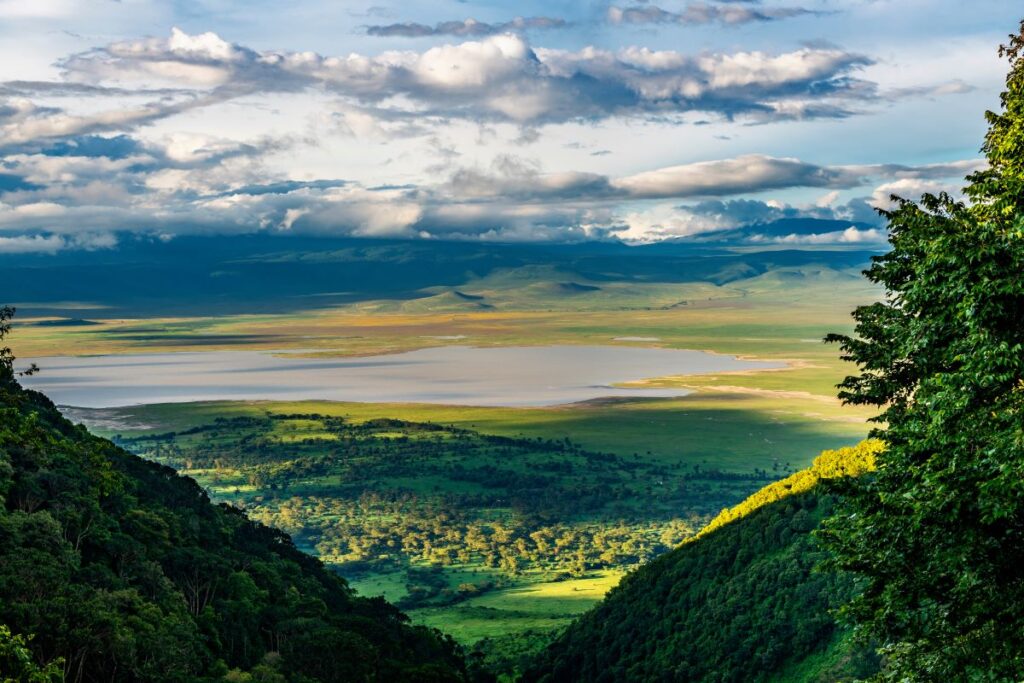
Still in Tanzania, the UNESCO World Heritage-listed Ngorongoro Conservation Area is another mainstay of the Big Five safari circuit thanks to its spectacular landscape and flourishing wildlife. Ngorongoro is the world’s largest inactive volcanic caldera and its lush grounds host flocks of pink flamingos and lazing hippos among varied other fauna. Visitors may also get a glimpse of migrating zebra and wildebeest as they make their way north to Kenya. With safari lodges and a showstopping sunset over the crater rim, Ngorongoro is a must for your Tanzanian itinerary.
Bwindi Impenetrable Forest, Uganda
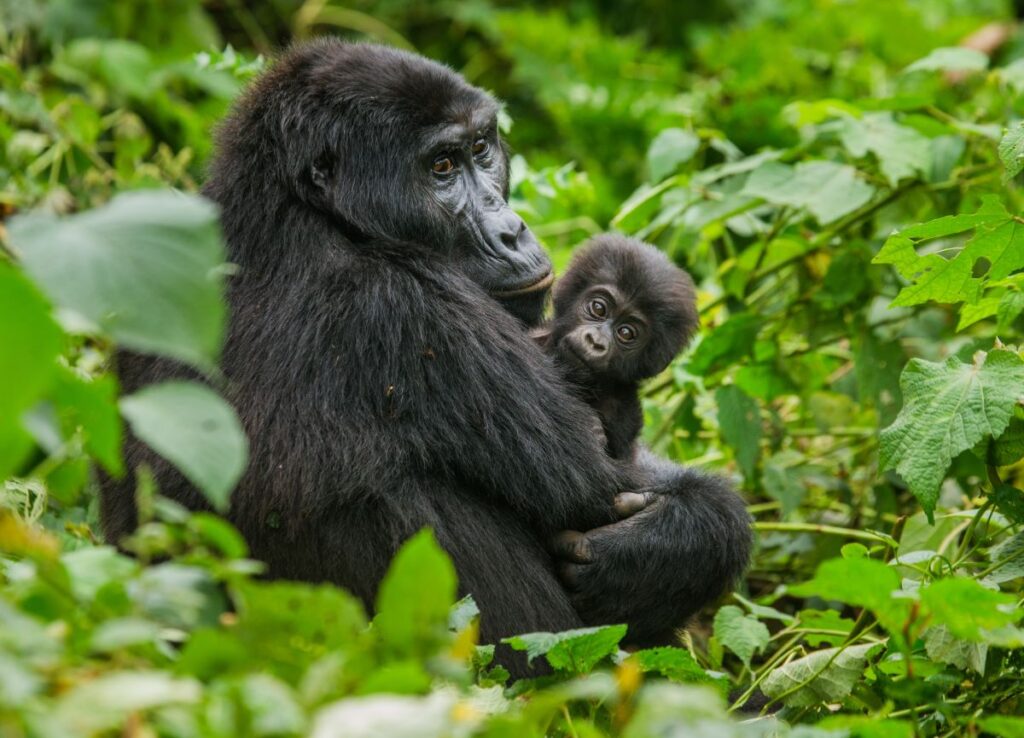
Some names say it all. In Bwindi Impenetrable National Park, lush primeval forest of bamboo and fern keeps wondrous wildlife hidden from the outside world. With limited daily access and a strict schedule for trekking, visitors to Uganda’s most magical forest can see both chimpanzees and mountain gorillas in the wild – one of few places where such cohabitation takes place. Following an experienced guide, you can delve into the dense bamboo in hopes of seeing these primates for an unforgettable hour. Along the way, watch for more than 200 different butterfly species and over 350 types of bird.
Namib-Naukluft National Park, Namibia
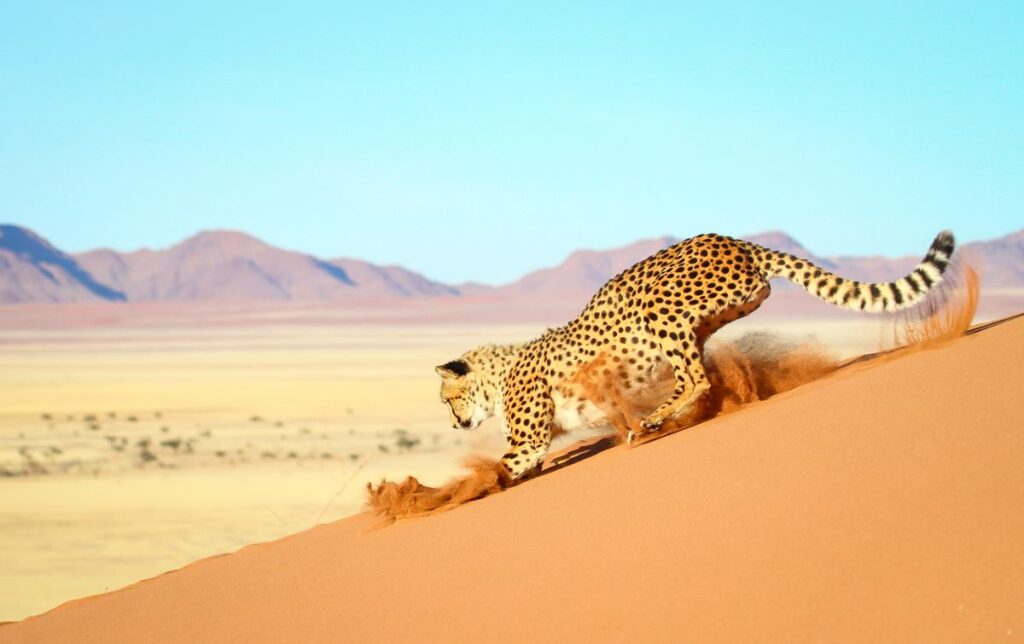
Though it may receive less buzz than its better-known neighbours, Namibia is one of Africa’s most accessible and dramatic destinations for wildlife-lovers. The incomprehensibly large Namib-Naukluft National Park – one of the largest in the world – will help you along the way to spotting many of the Big Five, but it’s the jaw-dropping landscapes that bring Namibia to life. The immense Namib Desert, believed to be the oldest in the world, is home to the world’s largest cheetah population and a series of sand dunes that reach up to almost 400-metres high.
Eager to explore more of Africa? Check into some of Africa’s Most Luxurious Safari Lodges
